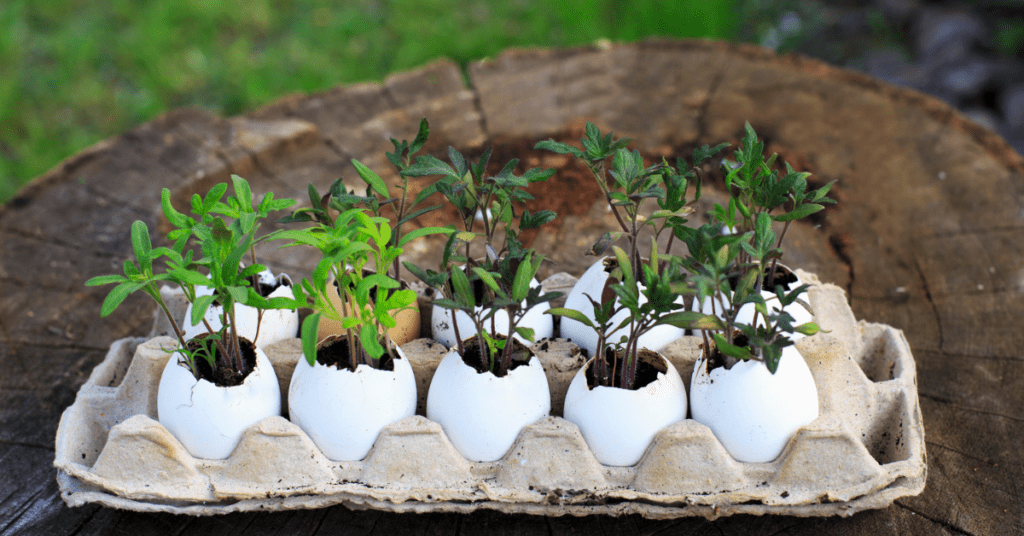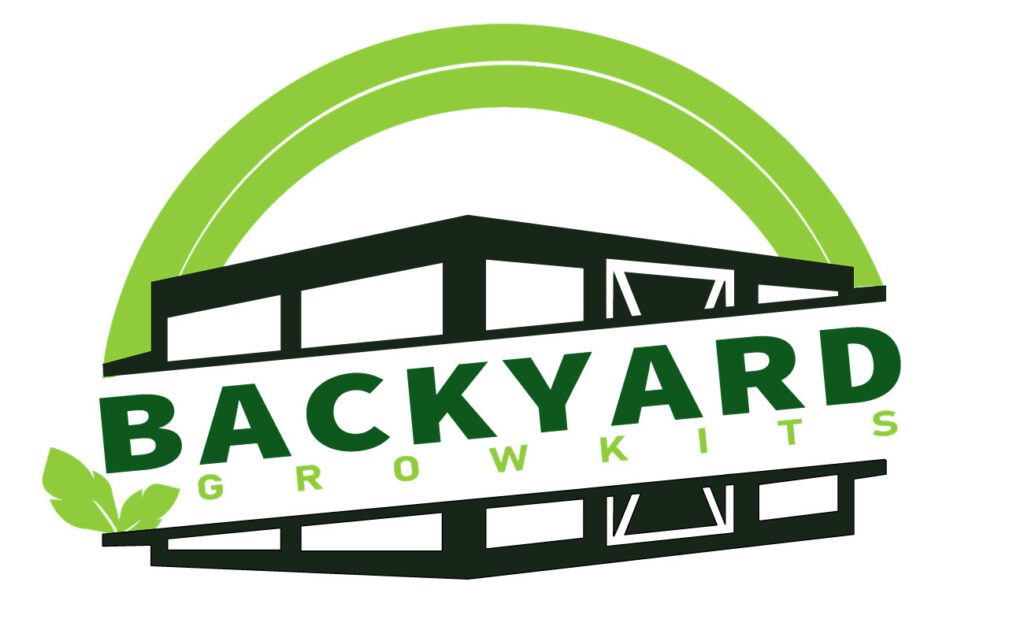One of the easiest and most effective ways to do this is by growing eggshell seedlings. Not only is it a great way to reduce waste, but it also provides a natural source of nutrients for your plants.
Eco-friendly gardening is a practice that aims to minimize the negative impact of gardening on the environment. This includes using sustainable gardening techniques that reduce water waste, promote biodiversity, and avoid harmful chemicals.
Eco-friendly gardening also involves using locally sourced and organic materials, composting, and recycling.
By adopting these practices, gardeners can create a healthier and more sustainable environment while enjoying the beauty and benefits of their gardens.
What are Seedlings, and Why are They Important?
Seedlings are young plants that have recently sprouted from seeds and are just beginning to develop their first true leaves. They are important because they are the starting point for most garden plants and play a crucial role in the gardening process.
Seedlings give gardeners a head start on the growing season and allow them to start plants indoors before the outdoor planting season begins. This gives the plants more time to mature, which can result in a larger and healthier yield.
Seedlings also give gardeners more control over the growing conditions, such as temperature, light, and moisture, which can help ensure optimal growth and development.
Furthermore, seedlings can help preserve genetic diversity by allowing gardeners to start plants from heirlooms or rare seeds that may not be available as mature plants.
Additionally, starting seedlings from seed is often less expensive than buying mature plants from a nursery, making it a cost-effective option for gardeners.
Advantages of Growing Seedlings in Eggshells
Growing seedlings in eggshells can have several advantages for gardeners. Here are a few:
Sustainable and eco-friendly:
Gardeners can reuse waste products and reduce their environmental footprint by using eggshells as containers for seedlings. Eggshells are biodegradable and can be crushed and added to compost or used as a natural fertilizer for plants.
Nutrient-rich:
Eggshells are rich in calcium, which is essential for plant growth and development. When eggshells are used as seedling containers, the seedlings can benefit from the calcium in the shells as they grow.
Cost-effective:
Growing seedlings in eggshells is a cost-effective way to start a garden. Eggshells are readily available in most households, making them an easily accessible and inexpensive option.
Convenient:
Eggshells are a convenient container for seedlings because they can be easily moved around and transplanted into the ground without damaging the roots. The shells also provide a protective barrier against pests and harsh weather conditions.
How to Prepare Eggshells for Planting
Begin by cracking your eggs and separating the eggshells from the egg whites and yolks. Rinse the eggshells with warm water to remove any remaining egg residue and then let them dry completely.
Once dry, use a spoon to carefully tap and remove the top of the eggshell to create an opening
Choosing the Right Seeds for Eggshell Planting
When selecting seeds, it is essential to consider factors such as size, growth requirements, germination rate, timing, and the source of the seeds.
Firstly, choose small seeds that won’t outgrow the space of the eggshells. Small herbs like basil, parsley, cilantro, and vegetables like lettuce, spinach, and radish are excellent options.
Secondly, consider the plant’s growth requirements, such as sunlight, water, and nutrients. Choose seeds that match the conditions in which they will be planted.
Thirdly, opt for organic, non-GMO seeds to ensure the plants are healthy and non-toxic.
Fourthly, choose seeds with a high germination rate, which is the percentage of seeds that will sprout and grow.
Finally, consider the timing and choose seeds suitable for the season and the planting method.
Planting Seeds in Eggshells
Planting seedlings in eggshells is a simple and rewarding way to start your garden. Here are some steps to follow for the successful planting of seedlings in eggshells:
Fill the eggshells with soil:
Use a spoon or small scoop to fill the eggshells with potting soil, leaving a small space at the top. You can also add organic fertilizer or compost to enrich the soil.
Plant the seed:
Make a small hole in the center of the soil in each eggshell. Gently place the seed into the hole, and cover it with a thin layer of soil.
Water the seed:
Use a spray bottle or small watering can to gently water the seed. Be careful not to overwater the eggshells, as they do not have drainage holes. You can also mist the seed with water regularly to keep them moist.
Place the eggshells in a container:
Set the eggshells in an egg carton or container to hold them upright. This will help keep them stable and make them easier to move around.
Provide the right environment:
Keep the eggshells in a warm, bright location without direct sunlight. Ensure to water them regularly and keep the soil moist but not waterlogged.
Caring for Eggshell Seedlings

Once your seedlings have sprouted, you need to provide them with the necessary care to ensure they grow strong and healthy.
One important thing to keep in mind is to maintain soil moisture. The soil should be moist but not waterlogged, which can cause damage to the fragile seedlings.
Another essential factor to consider is light. Ensure that your seedlings are getting enough sunlight, and if you’re growing them indoors, you can use a grow light to supplement natural light.
Maintaining a consistent temperature of around 70-75°F (21-24°C) is crucial for their growth. Avoid exposing them to cold drafts or extreme heat, stunting their growth, or damaging the plant.
Lastly, fertilizing the seedlings with a diluted liquid fertilizer or adding organic compost to the soil can provide additional nutrients.
Transplanting Eggshell Seedlings to the Garden
Once the seedlings have outgrown their eggshells, it’s time to move them to a permanent home in the garden.
To do this, start by gently cracking the eggshell to avoid damaging the seedling’s roots. Carefully remove the seedling and soil from the eggshell, taking care not to disturb the roots.
Before transplanting, make sure the garden soil is loosened and well-drained. Dig a hole slightly larger than the eggshell and place the eggshell and seedling into the hole.
Cover the eggshell and roots with soil, firming it around the stem to provide support. Water the plant thoroughly, and continue to monitor the soil moisture level in the coming days to ensure the plant stays hydrated.
Tips for Successful Eggshell Seedling Gardening
Use a good quality potting soil
Choose seeds that are suitable for eggshell planting
Keep the soil moist but not waterlogged
Make sure your seedlings are getting enough sunlight
Consider using a grow light for indoor seedlings
Transplant your seedlings when they have outgrown their eggshells
Conclusion
Growing seedlings in eggshells is a simple and effective way to make your gardening eco-friendlier. By using a natural and biodegradable material, you are reducing waste while also providing your plants with important nutrients.
With a little care and attention, your eggshell seedlings will grow into strong, healthy plants that will provide you with a bountiful harvest. So why not give it a try and see the results for yourself?
If you have any questions about eco-friendly gardening or would like more tips on reducing your environmental impact, feel free to contact me. Happy gardening!
